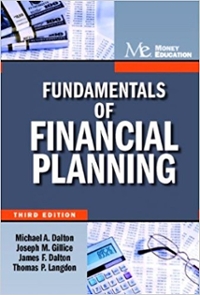

Jim and Kim are a married couple who have decided to invest money in mutual funds. Jim thinks they should invest in a stock fund, while Kim thinks they should invest in a more diversified fund. They agree to each invest $1000 on March 2, 2020 into the fund of their choice (Jim in the stock fund, Kim in the diversified fund). They plan to cash in their mutual funds on December 4, 2020. Here are the unit prices of each fund at various points throughout the year: Date Stock Fund Diversified Fund March 2 15.50 6.72 May 4 15.78 7.02 14.69 6.95 September 28 16.12 6.64 October 15 16.43 6.54 December 4 16.33 7.08 When you invest in a mutual fund, you are buying "units and the total amount of money you have in the fund at any point in time is determined by taking the total number of units and multiplying by the unit price. For example, when Jim invests his $1000 on March 2, he is buying $1000/15.50 = 64.516 units (three decimal places is fine). His fund value, say on May 4, would be 64.516 x 15.78 = $1018.06, a gain of $18.06. However, as you can see, the unit price of a mutual fund does not always go up. Its value varies day-to-day. July 13 (b) To make the game of investing a bit more interesting, both Jim and Kim agree to deposit another $1000 at some point during the year and to withdraw $800 at some point during the year (it does not matter in what order). The following was observed: Jim: withdrew $800 on July 13, deposited $1000 on September 28 Kim: withdrew $800 on May 4, deposited $1000 on October 15 (i) How much money does Jim have on December 4? What annual rate of return did he earn on his money? Compare this rate to the answer in (a). (Hint: set up an equation of value using December 4 as the focal date; then solve for r) (5 marks) (ii) How much money does Kim have on December 4? What annual rate of return did she earn on her money? Compare this rate to the answer in (a). (5 marks) (note: for both (i) and (ii), you will have to determine the balance of their fund on December 4) (iii) Briefly explain why Jim's rate of return is different from Kim's and briefly explain why their rates of return differ from the fund's rate of return as determined in part (a). (2 marks) Jim and Kim are a married couple who have decided to invest money in mutual funds. Jim thinks they should invest in a stock fund, while Kim thinks they should invest in a more diversified fund. They agree to each invest $1000 on March 2, 2020 into the fund of their choice (Jim in the stock fund, Kim in the diversified fund). They plan to cash in their mutual funds on December 4, 2020. Here are the unit prices of each fund at various points throughout the year: Date Stock Fund Diversified Fund March 2 15.50 6.72 May 4 15.78 7.02 14.69 6.95 September 28 16.12 6.64 October 15 16.43 6.54 December 4 16.33 7.08 When you invest in a mutual fund, you are buying "units and the total amount of money you have in the fund at any point in time is determined by taking the total number of units and multiplying by the unit price. For example, when Jim invests his $1000 on March 2, he is buying $1000/15.50 = 64.516 units (three decimal places is fine). His fund value, say on May 4, would be 64.516 x 15.78 = $1018.06, a gain of $18.06. However, as you can see, the unit price of a mutual fund does not always go up. Its value varies day-to-day. July 13 (b) To make the game of investing a bit more interesting, both Jim and Kim agree to deposit another $1000 at some point during the year and to withdraw $800 at some point during the year (it does not matter in what order). The following was observed: Jim: withdrew $800 on July 13, deposited $1000 on September 28 Kim: withdrew $800 on May 4, deposited $1000 on October 15 (i) How much money does Jim have on December 4? What annual rate of return did he earn on his money? Compare this rate to the answer in (a). (Hint: set up an equation of value using December 4 as the focal date; then solve for r) (5 marks) (ii) How much money does Kim have on December 4? What annual rate of return did she earn on her money? Compare this rate to the answer in (a). (5 marks) (note: for both (i) and (ii), you will have to determine the balance of their fund on December 4) (iii) Briefly explain why Jim's rate of return is different from Kim's and briefly explain why their rates of return differ from the fund's rate of return as determined in part (a). (2 marks)








